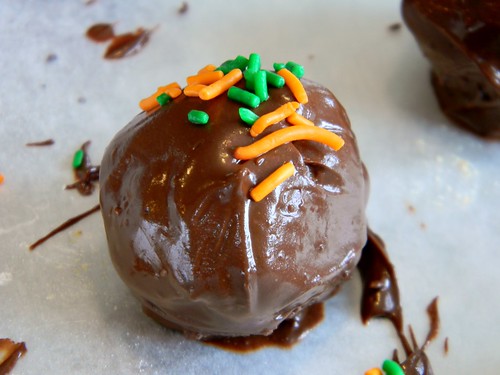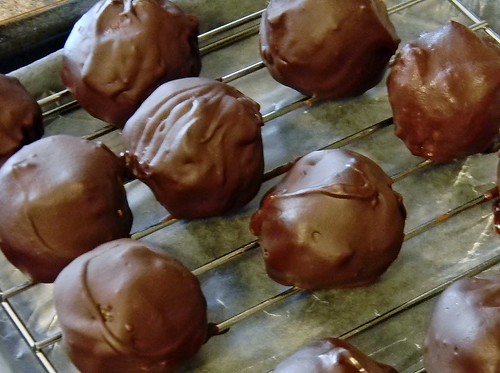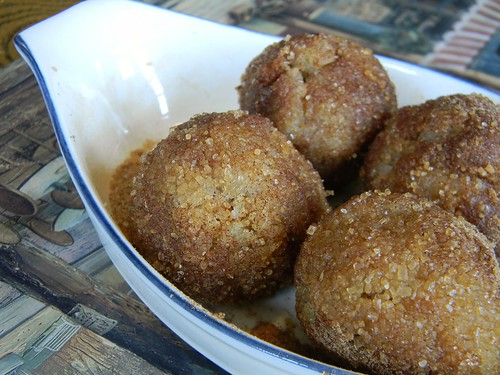The Flying Brownie
 Author: Shirley Fan
Author: Shirley Fan
Publisher: Harvard Common Press (2013)
One of the common things that accompany a child’s first
leaving home for university is a “care package” from Mom and Dad, Gran and
Gramps or a family friend. From shoeboxes lovingly filled with chocolate chip
cookies, cereal snack mixes and (if you had really
progressive parents) a Beer Store gift card and taxi number, to huge
shipping crates packed with soup mix, pasta, applesauce and granola bars, the
taste of home is never unappreciated. Mailbox gifts fill the holiday season
too, with fudge, brownies and shortbreads flying coast to coast every day from
Hallowe’en to New Year’s. Some treats are family heirlooms that are
time-tested, well-respected and as such looked forward to every year, but for
those needing a dash or two of extra inspiration when it comes to jazzing up
their care packages, cookbooks filled with mailable goodies are a great place
to start. Shirley Fan is throwing her chef’s hat into the ring with her book The
Flying Brownie.
Flying Brownie is a small but relatively
complete-spectrum hardcover cookbook, comprised of 100 mailbox-friendly
recipes. From candy to granola and everything in between, something is bound to
grab your attention. The items, like the book itself, are designed to be
sturdy, unique and enjoyable, and for all appearances they should be. However,
actually using this book turned out
to be more of a post-office nightmare than a dreamy delivery guy.
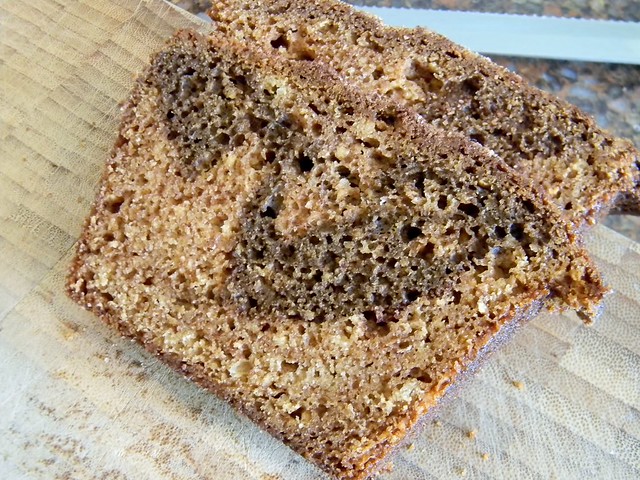 I had high hopes when I first looked through the
beautiful photos in Flying Brownie. After all, who could pass up a chunk
of Peppermint Fantasy Fudge (p.88) or
a slice of espresso-swirled Coffee and
Spice Doughnut Loaf (p. 110)? Unfortunately, the batter of the loaf in
question was far runnier than any quickbread I had ever made, didn’t swirl very
well and overflowed my 9x5-inch loaf pan (quite a feat, since that pan runs on
the large side generally). At one hour into the baking time, when the cake
should have been thoroughly done, I opened the oven to find a batter-caked,
smoking mass on the floor of the unit and a still mostly-raw batter in the pan.
All told, it took a further 45 minutes to firm up, and when we cut into it we
definitely noticed a sharp smell and taste of baking soda.
I had high hopes when I first looked through the
beautiful photos in Flying Brownie. After all, who could pass up a chunk
of Peppermint Fantasy Fudge (p.88) or
a slice of espresso-swirled Coffee and
Spice Doughnut Loaf (p. 110)? Unfortunately, the batter of the loaf in
question was far runnier than any quickbread I had ever made, didn’t swirl very
well and overflowed my 9x5-inch loaf pan (quite a feat, since that pan runs on
the large side generally). At one hour into the baking time, when the cake
should have been thoroughly done, I opened the oven to find a batter-caked,
smoking mass on the floor of the unit and a still mostly-raw batter in the pan.
All told, it took a further 45 minutes to firm up, and when we cut into it we
definitely noticed a sharp smell and taste of baking soda.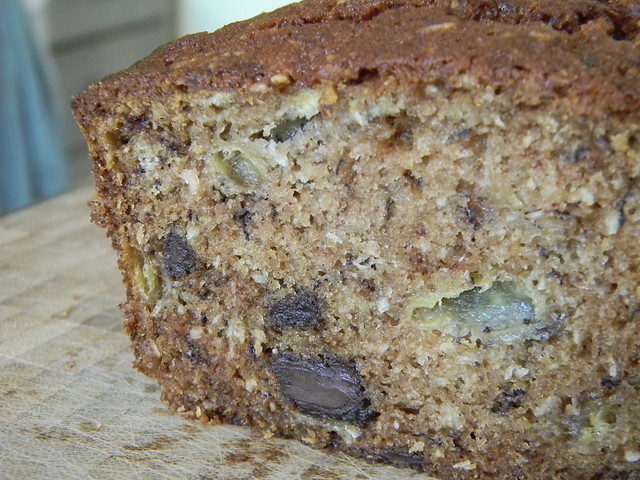 Sadly, the Chocolate
Chip and Coconut Banana Bread (p. 107) didn’t fare much berrer. Learning from
my experience with the Doughnut Loaf
disaster, I put about a quarter of the (again, very runny) batter into muffin
tins and placed everything on a rimmed sheet tray. This loaf took about an hour
and 20 minutes to test done (still far longer than stated in the book), and even
after letting it cool completely it was definitely on the wetter side of moist
inside. Like the previous recipe, the baking soda aroma and taste was
noticeable, and I would seriously re-evaluate the 1-teaspoon measure that Fan
seems to use across the board in Flying Brownie’s quickbread section
before making anything else. My disappointment with these two seemingly simple
recipes jaded me from trying any others in the book, a shame since there were
so many decadent looking options that would have been perfect for gifting if I
knew they would turn out properly.
Sadly, the Chocolate
Chip and Coconut Banana Bread (p. 107) didn’t fare much berrer. Learning from
my experience with the Doughnut Loaf
disaster, I put about a quarter of the (again, very runny) batter into muffin
tins and placed everything on a rimmed sheet tray. This loaf took about an hour
and 20 minutes to test done (still far longer than stated in the book), and even
after letting it cool completely it was definitely on the wetter side of moist
inside. Like the previous recipe, the baking soda aroma and taste was
noticeable, and I would seriously re-evaluate the 1-teaspoon measure that Fan
seems to use across the board in Flying Brownie’s quickbread section
before making anything else. My disappointment with these two seemingly simple
recipes jaded me from trying any others in the book, a shame since there were
so many decadent looking options that would have been perfect for gifting if I
knew they would turn out properly.
As much as I wanted to love and use Shirley Fan’s book
for gift making this holiday season, I’m inclined to look elsewhere for my
recipes. As a Canadian, the US Postal Service mailing advice doesn’t apply to
me either, and the scant Resource list is inaccessible to non-US citizens too.
However, if you are in the US and looking for a little help in that respect, The
Flying Brownie can be of some use. Just stay away from the quickbreads.
Available on Amazon

